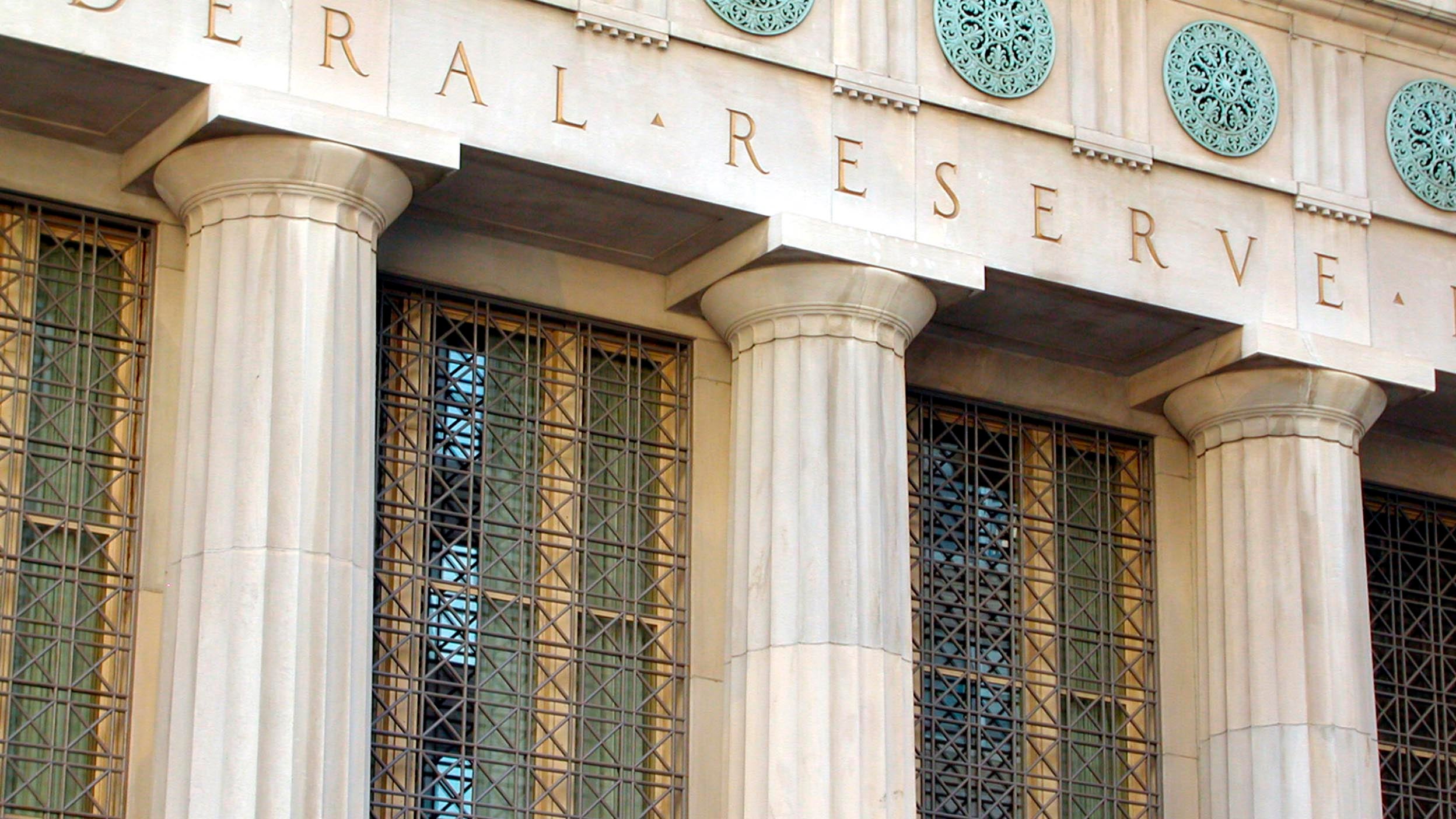
Markets and Economy Above the Noise: Policy uncertainty persists
The challenges of the current investment environment are well documented, so maybe it’s more interesting to talk about what could go right.

The market performed better if there wasn’t a subsequent recession or if the economy was already in recession during easing.
Value and small-cap stocks and energy and precious metal commodities performed after past rate cuts.
Longer-term Treasuries, investment grade corporate bonds, and municipals have had positive returns during easing cycles.
Now that the Federal Reserve (Fed) has cut interest rates, everyone is wondering what rate cuts mean for markets and investments. A look back at history provides some insight. Here are my key takeaways after analyzing the data.
The performance of stocks during past easing cycles was dependent on the state of the US economy. (See chart below.) The US stock market has historically posted strong returns after the start of an easing cycle if the economy didn’t fall into a recession within the next 12 months or if it was already in a recession at the start of the easing cycle. For example, the Fed raised rates by 300 basis points over the 12 months ended February 1995 before ending its tightening cycle. The US economy didn’t enter a recession, and the market performed well over the subsequent year.
Note: Chart shows average S&P 500 Index performance 12 months before and 12 months after the beginning of the past 16 easing cycles. Already in recession: 1970, 1974, 1980, 1982. No recession: 1971, 1975, 1984, 1989, 1995, 1998. Entered recession: 1973, 1981, 1981, 2001, 2007, 2019. Sources: Federal Reserve Economic Database (FRED) and Bloomberg L.P., 6/30/24. The S&P 500 Index is a market-capitalization-weighted index of the 500 largest domestic US stocks. An investment cannot be made directly into an index. Past performance does not guarantee future returns.
Value-style and small-cap stocks have been sensitive to the shape of the yield curve. As short rates fall and the yield curve steepens, which has tended to happen after interest rate cuts (see yield curve section below), value and small caps have historically performed well over the subsequent years. (See chart below.) That’s because smaller businesses tend to be funded by debt and can potentially benefit from lower borrowing costs. Lower rates can also lead to reinvigorated economic activity, which may serve as a catalyst to unlock value in the market.
Commodities are widely priced in US dollars, meaning a weakening of the dollar in response to lower interest rates may be a tailwind for commodity prices. The price of oil and gold, specifically, tend to be sensitive to changes in interest rates. (See chart below.) Commodity prices, however, aren’t solely determined by the direction of rates. They may also be influenced by macro factors such as economic growth and micro forces like inventories and weather.
Cumulative average return for Bloomberg Commodity index and subindexes around past easing cycles
| -6 months | -3 months | +3 months | +6 months | +9 months | |
| Commodities | 3.4% | 0.1% | 0.3% | 3.1% | 4.3% |
| Energy | 15.2% |
2.9% |
0.4% |
6.0% |
11.9% |
| Industrial metals | -5.4% |
-8.0% |
1.7% |
-3.7% |
-5.7% |
| Precious metals | -3.8% |
-0.9% |
0.8% |
9.1% |
7.7% |
| Agriculture | 0.7% |
1.5% |
0.3% |
2.6% |
4.2% |
| Livestock | -2.4% |
-2.1% |
-0.6% |
-3.6% |
-7.2% |
Sources: Goldman Sachs Investment Research, 2/20/2024. J.P. Morgan Global Commodities Research, 2/14/24. Based on the Bloomberg Commodity Index and subindexes around the first cut in five prior Fed easing cycles: Jun. 1989, Jul. 1995, Jan. 2001, Sep. 2007, and Jul. 2019. Pre-February 1991, BCOM Industrial Metals ER Index provided by GSCI Industrial Metals ER Index. An investment cannot be made directly into an index. Past performance does not guarantee future returns.
Short-term interest rates have historically fallen more than long-term rates around prior easing cycles, resulting in a steepening of the yield curve.1 This may be a looming challenge for investors in short-term Treasuries and cash-like instruments. The comparatively large downward moves in short rates around the start of easing cycles may create reinvestment risk.
Intermediate-term US Treasuries, on average, have outperformed short-term US Treasuries in the 12 months following the first interest rate cut in an easing cycle, returning 6.12% and 4.72%, respectively, on average. As with stocks, performance has been dependent on the state of the economy. Intermediate Treasuries’ outperformance (7.73%) over short-term Treasuries (3.16%) on average was driven by the returns during recessions. In instances when the economy didn’t enter a recession, short-term US Treasuries (6.27%) outperformed intermediate term (4.51%) on average.2
Investment grade corporate bonds and municipals have posted positive returns during easing cycles, although returns have tended to be higher when the economy didn’t enter a recession. (See chart below.) High yield corporate bonds have been especially sensitive to economic downturns, as default rates tend to rise in recessions.
Source: Bloomberg L.P., 3/4/24. Based on monthly total return data (annualized for cycles more than one year) from the first rate cut through the last cut in all easing cycles since 1989: Jun. 1989–Sep. 1992, Jul. 1995–Jan. 1996, Sep. 1998–Nov. 1998, Jan. 2001–Jun. 2003, Sep. 2007–Dec. 2008, Jul. 2019–Mar. 2020. Investment grade corporates, based on the Bloomberg US Corporate Bond Index, which measures the performance of the investment grade, fixed-rate, taxable corporate bond market. High yield corporates, based on the Bloomberg US Corporate High Yield Bond Index, which measures the performance of the high yield, fixed-rate corporate bond market. Municipals based on the Bloomberg US Municipal Index, which measures the performance of the USD-denominated long-term tax-exempt market. An investment cannot be made directly into an index. Past performance does not guarantee future returns.
The decision to cut interest rates is a tricky one. Easing too much or too soon could reignite inflation, while easing too little or too late could have consequences for economic growth. The economy has clearly shifted away from inflation and towards growth. The market appears to be primed for a so-called “soft landing,” which is a slowdown in economic activity that doesn’t lead to a recession. That’s our base case. There’s the risk, however, that the Fed tightened policy by too much and is late to ease conditions. The resilience of the economy (or lack thereof) is likely to have significant implications for near-term market returns.
Source: Bloomberg L.P., 6/30/24.
Source: Bloomberg L.P., 6/30/24. Based on monthly total return data in the 12 months after the first rate cut in all easing cycles since 1989: Jun. 1989, Jul. 1995, Sep. 1998, Jan. 2001, Sep. 2007, and Jul. 2019. Intermediate US Treasuries based on the Bloomberg US Treasury Intermediate Index, which measures the performance of USD-denominated, fixed-rate, nominal debt issued by the US Treasury. Short US Treasuries based on the Bloomberg US Short Treasury Index, which measures the performance of US Treasury bills, notes, and bonds under 1 year to maturing. An investment cannot be made directly into an index. Past performance does not guarantee future returns.

The challenges of the current investment environment are well documented, so maybe it’s more interesting to talk about what could go right.

The global economic outlook is uncertain, yet European, UK, Chinese, and Japanese stocks all rose last week while US stocks fell.

While stock market volatility can be unsettling in times of uncertainty, remembering these things can help you weather the storm.
Important information
NA3869273
Image: orgnmaster/Getty
Past performance does not guarantee future results. An investment cannot be made directly into an index.
All investing involves risk, including risk of loss.
Quantitative easing (QE) is a monetary policy used by central banks to stimulate the economy when standard monetary policy has become ineffective.
A value style of investing is subject to the risk that the valuations never improve or that the returns will trail other styles of investing or the overall stock markets.
Stocks of small companies tend to be more vulnerable to adverse developments, may be more volatile, and may be illiquid or restricted as to resale.
Changes in the political or economic conditions of countries where companies in the gold and precious metals sector are located may have a direct effect on the price of gold and precious metals.
The yield curve plots interest rates, at a set point in time, of bonds having equal credit quality but differing maturity dates to project future interest rate changes and economic activity.
A basis point is one-hundredth of a percentage point.
Bloomberg Commodity Index is calculated on an ER basis and reflects commodity price movements. The index rebalances annually weighted 2/3 by trading volume,1/3 by world production and weight-caps are applied at the commodity, sector and group levels. Roll period typically occurs from 6th-10th business.
Commodities may subject an investor to greater volatility than traditional securities such as stocks and bonds and can fluctuate significantly based on weather, political, tax, and other regulatory and market developments.
Interest rate risk refers to the risk that bond prices generally fall as interest rates rise and vice versa. An issuer may be unable to meet interest and/or principal payments, thereby causing its instruments to decrease in value and lowering the issuer’s credit rating.
The opinions referenced above are those of the author as of Sept. 18, 2024. These comments should not be construed as recommendations but as an illustration of broader themes. Forward-looking statements are not guarantees of future results. They involve risks, uncertainties, and assumptions; there can be no assurance that actual results will not differ materially from expectations.
This link takes you to a site not affiliated with Invesco. The site is for informational purposes only. Invesco does not guarantee nor take any responsibility for any of the content.